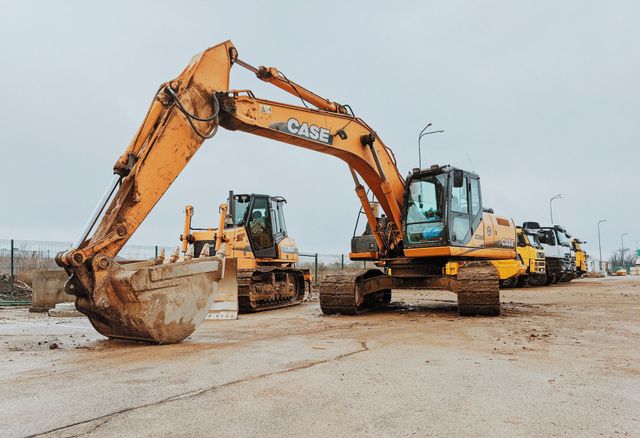In-Depth Exploration: The Science Behind Superior Excavation Practices
From ancient hand tools to modern hydraulic excavators, the advancement of excavation strategies has actually been a testimony to human resourcefulness and technological innovations. What really establishes premium excavation techniques apart is a deep understanding of geological concepts, paired with the application of sophisticated tools and approaches.
Evolution of Excavation Methods
Throughout background, the evolution of excavation techniques has actually played a vital duty in progressing building practices and archaeological discoveries. From the rudimentary tools used by our ancestors to the advanced equipment utilized in contemporary times, the development of excavation techniques has actually considerably transformed how we approach different projects.
In old times, manual work with fundamental devices such as pickaxes, wheelbarrows, and shovels was the primary method of excavation. This labor-intensive process restricted the depth and scope of excavations, frequently causing sluggish progression and limited access to particular websites. As worlds advanced, so did the devices and strategies utilized for excavation.
The Industrial Revolution marked a turning point in excavation techniques with the intro of steam-powered equipment. In contemporary times, innovation plays a crucial role in excavation, with innovations like GPS systems, drones, and 3D scanning enhancing accuracy and effectiveness in the area.
Duty of Innovation in Excavation

The combination of cutting-edge technology has essentially transformed the field of excavation, improving accuracy and effectiveness to unprecedented levels - dump truck companies in ohio. One of the essential technological innovations that has significantly impacted excavation practices is the usage of GPS systems.
Moreover, the advent of 3D modeling and simulation software program has streamlined the planning procedure for excavation projects. Operators and engineers can currently picture the whole excavation process prior to damaging ground, identifying prospective obstacles and optimizing workflow. Combined with this, the execution of drones in excavation activities has assisted in airborne studies, volumetric measurements, and site evaluations with unequaled rate and precision.
Geological Concepts in Excavation
An understanding of geological concepts is necessary for making sure the structural integrity and security of excavation websites. Geological factors play an essential duty in figuring out the feasibility and safety and security of excavation jobs.
Additionally, the geological framework of the location, consisting of mistakes, fractures, and rock formations, must be very carefully assessed to recognize possible threats and challenges. Excavating near geological fault or unsteady rock formations can lead to instability and prospective threats. By conducting thorough geological surveys and evaluation, engineers and excavators can create strategies to minimize risks and ensure the successful conclusion of excavation More Info tasks. Inevitably, integrating geological principles into excavation practices is important for attaining risk-free, efficient, and sustainable outcomes.

Most Recent Devices for Excavation
In the realm of excavation techniques, modern developments in tools have actually transformed the efficiency and accuracy of excavation procedures. These drones can offer detailed aerial studies of excavation sites, offering real-time information on topography and prospective hazards.
An additional cutting-edge tool gaining appeal is the implementation of 3D printing modern technology for producing custom excavation devices. This permits the production Click Here of specialized devices that are tailored to the details demands of a task, enhancing performance and decreasing downtime.
Furthermore, improvements in materials science have actually resulted in the growth of stronger and a lot more durable excavation tools. lancaster excavation. Tungsten carbide-tipped excavator accessories, for example, offer premium performance in difficult ground problems, enhancing efficiency on-site
Scientific research's Effect on Excavation Practices

Moreover, developments in materials scientific research have led to the production of stronger, more sturdy excavation devices and equipment. The usage of composite materials in miners and shovels has boosted their performance and long life, eventually increasing efficiency on excavation sites. In addition, scientific research on dirt technicians and geotechnical engineering has actually supplied valuable understandings into soil habits, allowing excavation specialists to make informed choices relating to excavation methods and dirt stabilization strategies. Generally, science remains to her comment is here drive development and renovation in excavation practices, making excavation jobs extra efficient, cost-efficient, and sustainable.

Conclusion
In conclusion, the advancement of excavation methods has been significantly affected by innovations in innovation and a deeper understanding of geological concepts. The most current tools and equipment made use of in excavation have actually enhanced efficiency and accuracy in the field. The application of clinical understanding has significantly enhanced excavation techniques, causing a lot more sustainable and reliable techniques for excavating various sorts of products.
In the world of excavation methods, modern advancements in devices have actually reinvented the performance and accuracy of excavation procedures. By leveraging scientific principles, the excavation sector has been able to dramatically boost efficiency, precision, and security in excavation processes. GPR allows excavation teams to non-invasively check and map subsurface frameworks, energies, and prospective risks, enabling them to plan excavation tasks with greater accuracy and lowered risk of crashes.
In addition, clinical research study on soil mechanics and geotechnical design has actually supplied useful insights right into soil behavior, permitting excavation experts to make enlightened choices relating to excavation techniques and dirt stablizing techniques. Overall, scientific research proceeds to drive development and improvement in excavation practices, making excavation jobs much more efficient, cost-effective, and lasting.